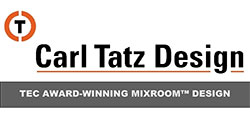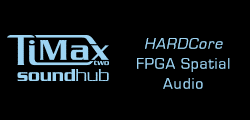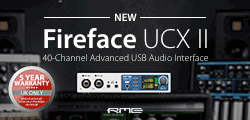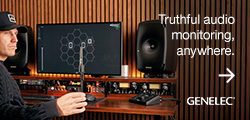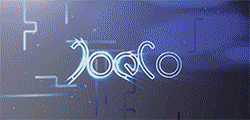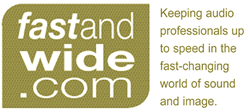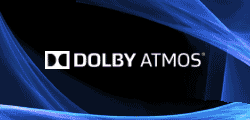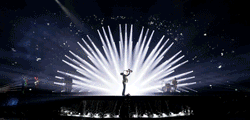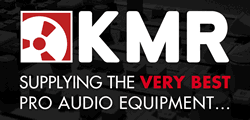![]() While not convinced by other aspects of the production, the Telegraph newspaper found praise for Isabella Bywater’s set design at London’s current production of Verdi’s Aida. It even made mention of Bobby Aitken’s sound design, declaring the amplification ‘properly unobtrusive’.
While not convinced by other aspects of the production, the Telegraph newspaper found praise for Isabella Bywater’s set design at London’s current production of Verdi’s Aida. It even made mention of Bobby Aitken’s sound design, declaring the amplification ‘properly unobtrusive’.
A look behind the scenes reveals the full extent of the technology and ingenuity so simply dismissed – and uncovers the secret of the sound localisation.
‘It can be difficult, trying to sell a system that nobody notices when it’s working well,’ muses Out Board’s Robin Whittaker as he leads the way backstage before the evening’s performance.
But Whittaker is far from unhappy with the low-key role his system is playing – 2012 marks the twelfth year that the Out Board TiMax audio localisation system has had a role in Aitken’s Royal Albert Hall designs. And he has the support of RAH opera veteran Richard Sharratt, fresh from Peter Gabriel’s Scratch My Back tour, who is mixing the show from behind a DiGiCo D5T digital theatre console: ‘The localistation directs you to look toward where the sound appears to be coming from,’ he agrees. ‘You really notice if you turn it off.’
A poisoned chalice
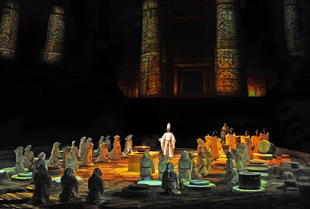 As with its previous Aitken Royal Albert Hall outings, the TiMax system was installed by Autograph Sound Recording under the supervision of system engineer Jim Douglas. Providing the heart of the sound for this ambitious ‘in-the-round’ production, its invisibility is a very healthy measure of its success. And, as a Raymond Gubbay production, Aida was sure to attract some flak from opera’s elite…
As with its previous Aitken Royal Albert Hall outings, the TiMax system was installed by Autograph Sound Recording under the supervision of system engineer Jim Douglas. Providing the heart of the sound for this ambitious ‘in-the-round’ production, its invisibility is a very healthy measure of its success. And, as a Raymond Gubbay production, Aida was sure to attract some flak from opera’s elite…
Performed in Italian but transposing the love triangle story set in ancient Egypt to an archaeological dig – with the action imagined by the character of Amelia Edwards who is added to Verdi’s original cast – made this an adventurous interpretation. But the prospect of amplifiers and loudspeakers remains the most brazen of affronts to opera purists. Transforming the eliptical 5,250-capacity venue (with its long-standing and well documented acoustic difficulties) into an intimate performance space is no mean feat, however.
Few critics realise, or are prepared to admit, that there would be no opera at the Royal Albert Hall without amplification. And it would probably antagonise them further to realise that the line array hangs visible above the orchestra accounted for only part of the audio system. If it were this simple, the vocal performances would all appear to come from one end of the stage, while the performers moved around the set in the centre of the hall.
Enter TiMax – another character that would be news to Verdi…
 Supporting Stephen Metcalf’s digital scenography and expansive sets with continuously localised vocal amplification was Out Board’s source-oriented reinforcement (SOR) system, based on a TiMax2 SoundHub audio delay matrix controlled by a TiMax Tracker automation system.
Supporting Stephen Metcalf’s digital scenography and expansive sets with continuously localised vocal amplification was Out Board’s source-oriented reinforcement (SOR) system, based on a TiMax2 SoundHub audio delay matrix controlled by a TiMax Tracker automation system.
In simple terms, a radar system tracks the position of the performers while signal processing enables the loudspeaker system to place virtual sound sources in the correct locations on the stage – allowing the suspicious opera-goer to believe they are hearing the performers’ voices directly.
The main orchestra system used for the Royal Philharmonic Orchestra comprised Martin Audio Longbow line array drops, out fills and subs fed from TiMax with some flatline delay added to focus them back to the orchestra platform. The d&b E0 front fills were driven from ten TiMax outputs, while the ring of UPJs were each fed from further TiMax outputs that also served the upper circle via delays provided by XTA processors. The XTA units also handled all system equalisation.
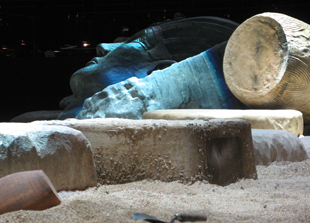 Hanging alongside, two drops of four Meyer Sound M1D speakers covered the upper choir seating areas, while the lower choir areas were served by d&b audiotechnik E3s mounted on the handrail.
Hanging alongside, two drops of four Meyer Sound M1D speakers covered the upper choir seating areas, while the lower choir areas were served by d&b audiotechnik E3s mounted on the handrail.
In addition to the orchestra PA, the Aida TiMax set-up called on a ring of nine flown loudspeaker clusters (each comprised of three Meyer Sound UPJs) above the stage and nine UPJ cabinets for the upper circle. Along with these, 18 d&b audiotechnik E0 front fills were hidden in scenery around the front lip of the stage.
The TiMax2 SoundHub 32x32 matrix and TiMax Tracker system were rented from Out Board, with pre-production and on-site support from Robin Whittaker. The system was delivered to site with the multiple Image Definition localisation delay set-ups already calculated from AutoCad data, making set-up of the multichannel distributed SOR system very quick.
‘We could have measured the space and built a model but this was all done from the drawings,’ Robin Whittaker says. ‘You can think of it as being akin to the modelling done by software used for setting up loudspeaker systems.’
In total, 26 TiMax2 SoundHub outputs were used to provide the necessary feeds to the loudspeaker systems.
On the move
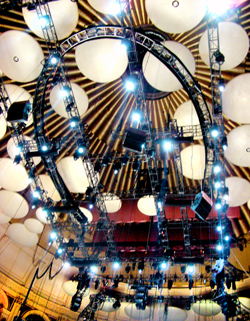 To capture the movement of the performers, seven TiMax Tracker TT Sensors were mounted around the balcony handrails to map the oval stage (in 13 zones), stalls, stairways and upstage areas in three dimensions. This extended performer tracking to allow automatic pre-cueing of the show’s several offstage entrances. The Sensors received sequenced pulses of UWB 6GHz-8GHz signal from TT Tags worn by the principals, from which the TiMax Tracker location server then applied vector (AOA) and time (TDOA) analysis to track the actors in real-time. The delay settings in the TiMax SoundHub are then continually adjusted to maintain seamless audio localisation simultaneously for the individual radio mic feeds. The two chorus groups were were not tracked, and so remained statically localised throughout the show.
To capture the movement of the performers, seven TiMax Tracker TT Sensors were mounted around the balcony handrails to map the oval stage (in 13 zones), stalls, stairways and upstage areas in three dimensions. This extended performer tracking to allow automatic pre-cueing of the show’s several offstage entrances. The Sensors received sequenced pulses of UWB 6GHz-8GHz signal from TT Tags worn by the principals, from which the TiMax Tracker location server then applied vector (AOA) and time (TDOA) analysis to track the actors in real-time. The delay settings in the TiMax SoundHub are then continually adjusted to maintain seamless audio localisation simultaneously for the individual radio mic feeds. The two chorus groups were were not tracked, and so remained statically localised throughout the show.
The level of localisation automation is welcomed by Richard Sharratt, as the radar tracking leaves the performers free to move about the stage without following previously ‘choreographed’ performance. ‘The automation means that I can concentrate on the mix instead of worrying about where the actors are going on the stage,’ he explains.
His DiGiCo D5T fed seven principals’ radio mics from direct channel outputs to TiMax SoundHub analogue inputs, plus two chorus groups. TiMax also received orchestra left, right and sub feeds from the desk, vocal reverb and three off-stage mic channels, including two in the gallery and one special subterranean scene input. This latter feed was used together with a specific effects Image Definition to localise the system down to the stage with a diffuse reverb patch to support a dark atmospheric chanting scene that apparently takes place beneath the stage – one of the highlights of the show.
Noted for his expertise in orchestral miking, Richard Sharratt gave the Aida orchestra – and other performers hidden away in the Royal Albert Hall’s gallery – the full treatment with a choice of mics that is guaranteed to make most recording studios envious. (Full mic list here...)
As the audience filed out, their discussion of Raymond Gubbay’s most high-tech Royal Albert Hall production to date – the first to use large-scale video mapping from six projectors and a Catalyst media server to add a further visual dimension to the ingenious set – may have overlooked the sound systems. But if amplifying an opera in a large venue is successful when its unnoticed, then this scant acknowledgement is worthy recognition of an ambitious job well done.
See also:
Performance tracking on the move in Swedish theatre
Domstufen Festspiele opera on track with TiMax
Case Study: Regent’s Park Open Air Theatre
Shiny, happy Fela!
More: www.outboard.co.uk
More: www.autograph.co.uk
More: www.isabellabywater.com




